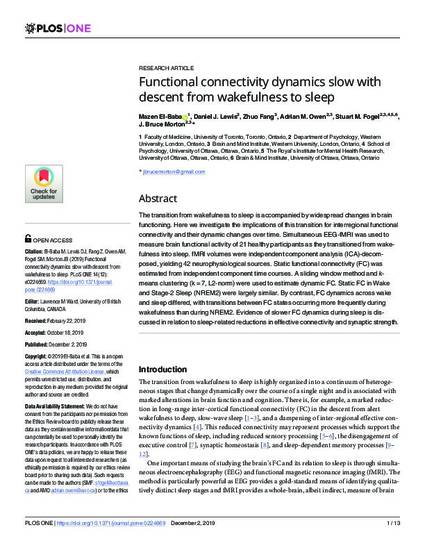
© 2019 El-Baba et al. This is an open access article distributed under the terms of the Creative Commons Attribution License, which permits unrestricted use, distribution, and reproduction in any medium, provided the original author and source are credited. The transition from wakefulness to sleep is accompanied by widespread changes in brain functioning. Here we investigate the implications of this transition for interregional functional connectivity and their dynamic changes over time. Simultaneous EEG-fMRI was used to measure brain functional activity of 21 healthy participants as they transitioned from wakefulness into sleep. fMRI volumes were independent component analysis (ICA)-decomposed, yielding 42 neurophysiological sources. Static functional connectivity (FC) was estimated from independent component time courses. A sliding window method and k-means clustering (k = 7, L2-norm) were used to estimate dynamic FC. Static FC in Wake and Stage-2 Sleep (NREM2) were largely similar. By contrast, FC dynamics across wake and sleep differed, with transitions between FC states occurring more frequently during wakefulness than during NREM2. Evidence of slower FC dynamics during sleep is discussed in relation to sleep-related reductions in effective connectivity and synaptic strength.
Available at: http://works.bepress.com/jbruce-morton/4/
